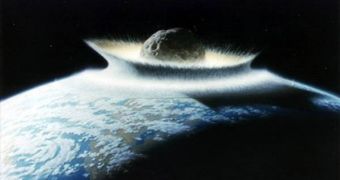While the probability of an asteroid hitting the Earth and wiping out all life on the planet is fairly slim, that doesn't mean we shouldn't be prepared and know our chances. Researchers became curious as to what kind of organisms could potentially survive a global mass extinction event, in which all forms of life, from trees to bacteria and humans, were endangered. Their research appears in the latest issue of the respected scientific journal Astrobiology, NewScientist reports.
Among the consequences of an asteroid impact, the most dire would include massive earthquakes, increased volcanic activity, chaotic tectonic plate movements and massive wildfires. Essentially, most buildings in the world would collapse on account of the tremors, and then become engulfed by flames. But the worst effects would come soon afterwards, as a black cloud of ash, sooth and smoke would settle over the entire planet, for a minimum period of six months, and a maximum of a few years.
Under these conditions, surviving the ensuing ice age would become extremely difficult for microorganisms, the only ones that would be able to do so for so long. In an attempt to simulate this scenario, researchers from the Open University's Center for Earth, Planetary, Space and Astronomical Research, in Milton Keynes, the UK, led by expert Charles Cockell, recreated the total darkness that one could expect to follow a cataclysmic event. Freshwater and marine microorganisms were placed in complete darkness for six months.
The study samples included phototrophs, organisms that convert sunlight into energy, and mixotrophs, which also rely on consuming dead matter for energy. Unsurprisingly, the phototrophs struggled for their survival, with only a few cells making it over the time frame, in a dormant state. The mixotrophs on the other hand, managed to adapt just fine, and even assisted the phototrophs in their struggle. By constantly reconverting dead matter, they ensured a flow of nutrients in the environment. Therefore, they were named the species of organisms most likely to survive global annihilation.

 14 DAY TRIAL //
14 DAY TRIAL //